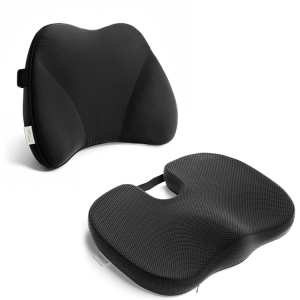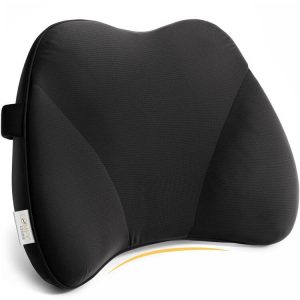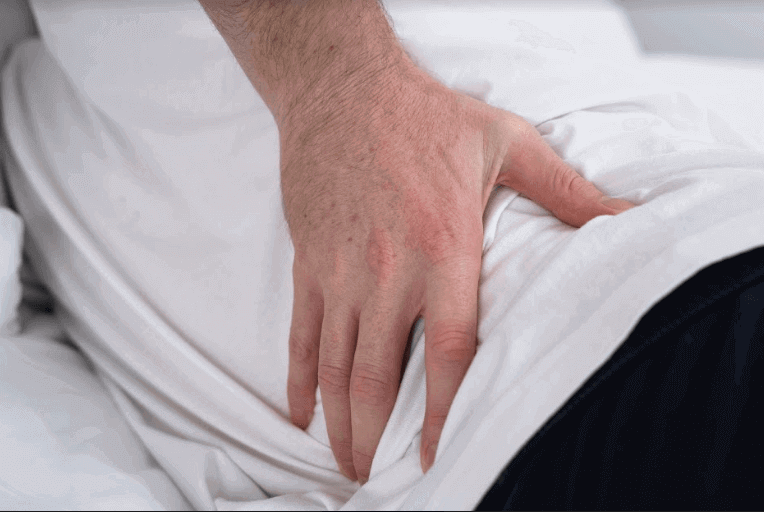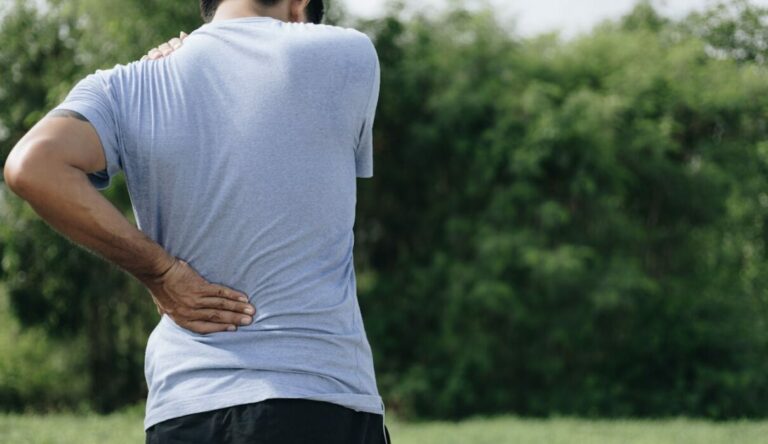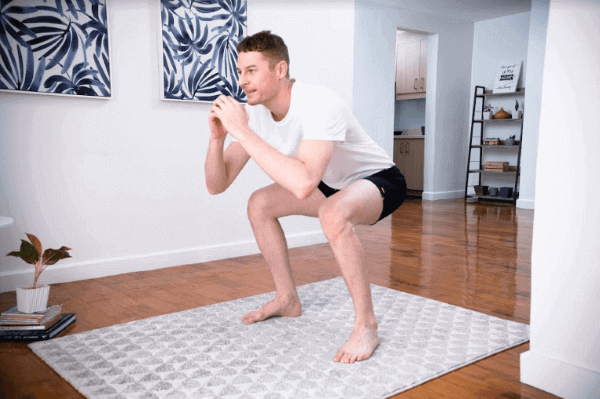
Our knees regularly handle an enormous amount of stress every day, and as we age, knee pain is no surprise. Pain behind the knee may start abruptly after an injury or may gradually develop over time, depending on the cause.
Knee injuries are prevalent in athletes; 40% occur in basketball, soccer, football players, and 60% in snow skiers.
Whatever the cause, severe pain behind the knee probably won’t go away on its own and requires medical attention. Here’s a rundown on some of the common causes of knee pain when bending, treatment alternatives, and a few points to guide you for fast recovery.
Knee Anatomy
The knee is the largest joint of the body, vital for movement, and vulnerable to injuries. Though it feels like a solid lump in the middle of your leg, it’s an intricate attachment of bone and cartilage pressed together by tightly wrapped ligaments. The kneecap is a solid disk of bone, also technically known as the patella. Behind it are the thigh bone (femur) and shin bone (tibia) that join together to create a hinge protected by thick clusters of cartilage.
What Causes Knee Pain When Bending?
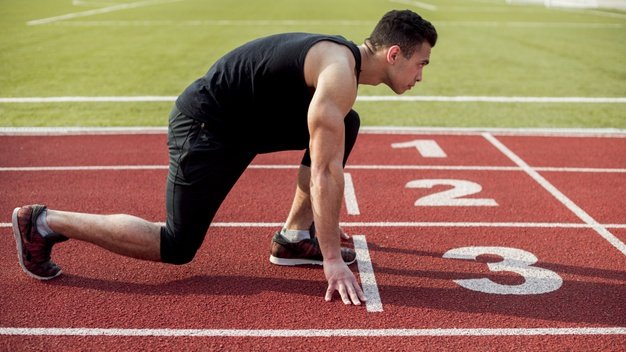
Runner's Knee
Runner's knee is the most prevalent cause of knee pain when bending, but it doesn't just affect runners (as what the name suggests), but office workers as well. Runner's knee is technically known as anterior knee pain or patellofemoral pain syndrome.
What Is It: Runner's knee is a condition with the knee cap's movement as it places additional stress and irritation on the cartilage as the knee bends and straightens.
Causes: Muscle weakness, tightness, or modified biomechanics such as foot arches and hip angle.
Symptoms: Knee pain occurs at the front of the knee, below, or on each side of the kneecap. It usually occurs while performing bending activities such as squatting, getting downstairs, or moving the knee after sitting down for prolonged periods (driving or watching TV). Another common characteristic is a grinding or grating sound as you bend and straighten the knee.
Onset: Symptoms may occur gradually.
Housemaid's Knee
Housemaid's knee is a typical cause of knee pain when bending and swelling of the knees for those who spent a lot of time kneeling.
What Is It: This condition is an inflammation on the prepatellar bursa located below the kneecap at the front of the knee.
Causes: Activities that involve prolonged and repetitive kneeling (housework or mechanics job) causes a blow to the knee.
Symptoms: Knee pain and swelling in front of the knee when bending and straightening the knee.
Onset: Gradual, unless a direct force is applied through the knee.
Baker's Cyst
Baker's cyst typically worsens if the patient fully extends the knee or moves around.
What Is It: A Bakers Cyst, also known as a popliteal cyst, is swelling of the popliteal area located behind the knee.
Causes: Excess fluid in the knee joint flows back into the bursa. Once the knee produces excessive synovial fluid, it will be accumulated in the popliteal bursa, which results in swelling. Usually caused by arthritis but can emerge with any condition that causes swelling in the knee joint (cartilage tear or gout).
Symptoms: Stiffness, swelling, clicking of the joint, and knee pain when bending that may get worse when performing strenuous activities. People can often feel a swelling or lump behind the knee that feels like a water-filled balloon.
Onset: Develops gradually.
Knee Sprain
The knee has four tough, elastic ligaments that link the thighbone to the lower leg bones.
What Is It: A sprain affecting the knee happens if a person splits or overstretches a ligament. Doctors use a grading system to diagnose the sprain's severity, depending on how much the ligament is damaged.
Causes: When the knee endures a hard muscle contraction, sudden twisting, or excessive force through the knee.
Symptoms: Pain that worsens with activity and difficulty bending and straightening the knee. Swelling, popping, and instability of the knees.
Onset: Immediate or within a few days of the injury.
Meniscus Tear
The knee is made up of the tibia (leg bone), femur (thigh bone), and patella (knee cap). Ligaments hold the bones together, and the patella lies in the quadriceps muscle in front of the knee. Meniscus tear is a typical cause of knee pain when bending.
What Is It: A meniscus tear can happen once a forceful twist or rotation of the knee is performed. When there is tearing or fraying in the meniscus, it results in inflammation and reduces the joint's cushioning. The torn fragment penetrates the joint, limiting any movement.
Causes: Wear and tear, sudden twisting of the knee, kneeling, deep squatting, or lifting massive objects.
Symptoms: Difficulty extending the knees fully. Pain when bending the knees, particularly going upstairs or squatting down. Limited knee movements and a feeling as if your knee is locked in place when attempting to move it.
Onset: May develop gradually from wear and tear or suddenly as a result of an injury.
Knee Bursitis
A bursa is a closed, fluid-filled sac that works as a gliding surface to lessen friction between the body's tissues.
What Is It: Bursitis is inflammation of one or more of the bursa around the knee and can cause swelling and tenderness in the affected area. A strain injury commonly causes this condition.
Causes: Prolonged/repetitive pressure, extreme friction, a fall, or blow to the knee.
Symptoms: Usually mildly painful and is frequently associated with increased pain when kneeling, which also causes stiffness and pain with walking.
Onset: Gradually but can develop abruptly after an injury.
Where Does It Hurt?
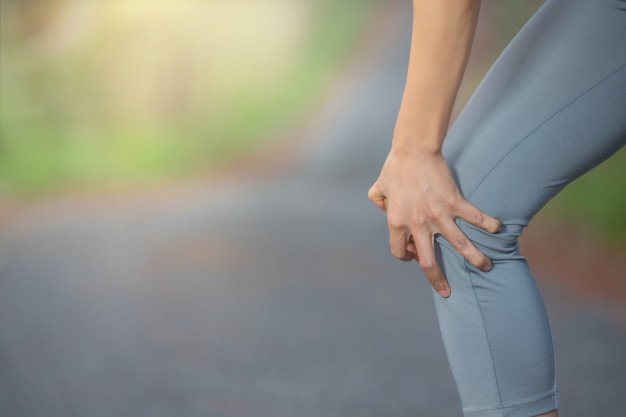
If you have knee pain in the front of the joint, it could be patellar arthritis or patellar tendonitis. These conditions cause pain when bending the knee, kneeling, or squatting. Typically, the lower the knee bend, the worse it will hurt.
Pain on the lateral or outside of the knee is prevalent in runners. Iliotibial band syndrome occurs when the connective tissues located on the outer thigh and knee are overused.
The discomfort restricted to the medial or inside of the knee could indicate tibiofemoral arthritis or meniscal irritation.
Nagging pain or pressure limited to the back of the knee could signify a damaged meniscus or an irritation in the popliteal muscle and its surrounding area.
My Knee Hurts When Bending - What Should I Do?
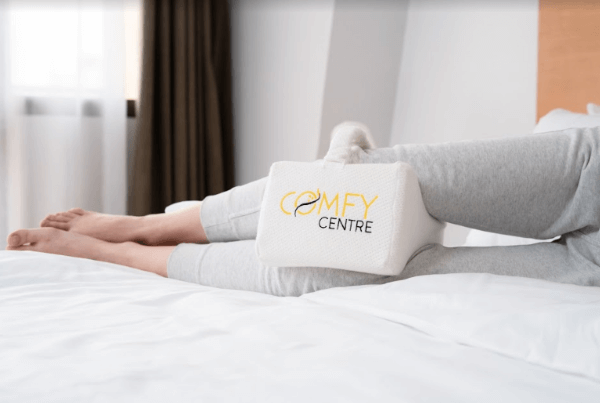
Manage the Pain
Knee pain is usually the outcome of inflammation – your body's natural response to damaged joint tissue. Pain and inflammation are entirely normal and vital for proper joint healing. Despite being "natural," joint inflammation can impact your quality of life. Knee pain can be excruciating that it makes your day-to-day tasks difficult. In most cases, taking NSAIDs to reduce inflammation, incorporating the R.I.C.E. method, and proper knee exercises are often used to manage pain temporarily.
Elevating the affected leg can also improve the blood flow to the knee while alleviating the swelling, inflammation, and discomfort.
You can incorporate a knee pillow specifically designed to provide support and comfort between or under your knees.
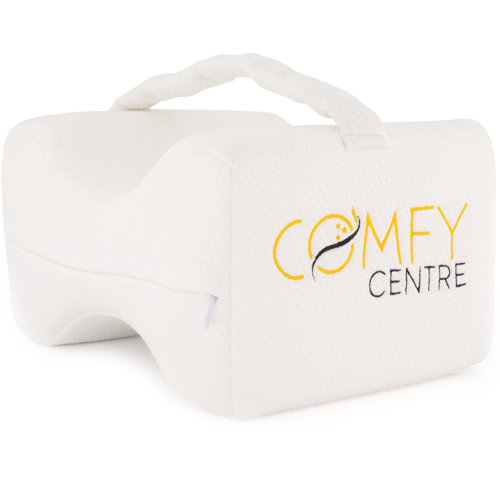
COMFYCENTRE® Knee Pillow With Strap
(114)
4.6/5
This knee pillow with strap is ideal for side sleepers who move more often at night. The strap keeps the knee pillow in place and prevents the knees from continuously pressing together while sleeping.
Professional Knee Exam
A comprehensive diagnosis will provide you peace of mind and help accelerate the healing process. Seek help from a healthcare professional and get your knee assessed.
Get Rid of the Pain
In most cases, knee pain may get better on its own with proper rest, but you have to engage in rehab exercises to overcome the injury. Physiotherapists specialize in providing particular exercises and treatment management that help improve and increase your joint's strength, stability, and mobility.
Additional Resources
How To Avoid Knee Pain When Squatting
5 Foot Exercises to Relieve Uncomfortable Knee Pain
How to Deal with Knee Pain After Hiking
5 Easy Stretches to Ease Knee Pain
When Should I See A Doctor?
The majority of knee injuries can be managed at home. However, you should ask for medical assistance if you have any of these symptoms:
- Severe pain in or around the knee, mainly when walking.
- Severe swelling (edema) in the knee.
- A loud and painful popping or cracking in the knee joint.
- A feeling of your knee giving out while walking or going upstairs and downstairs.
- A feeling of getting your knees locked when bending or straightening it.
- Modified sensation in the foot - a feeling of getting pinch with pins and needles (paresthesia) or a "loss of feeling" (anesthesia) in the lower leg.
- Incapability to complete your regular daily tasks after the initial 72 hours.
FAQs
Why does it hurt when I bend my knees?
There are a lot of possible injuries that could contribute to knee pain. A key thing to consider is if the pain occurred suddenly or gradually. If you had a previous injury, this likely increases the risk of re-injury. Finally, the location of the pain is a huge factor in the underlying cause of your pain.
How can I fix knee pain when bending?
It certainly depends on the underlying cause of the pain. The majority of knee injuries require exercise and balance training for the recovery phase. Muscle weakness, bad mobility patterns, and poor balance are often associated with those in pain. Seeking assistance from a healthcare professional such as a physiotherapist or a personal trainer can help you get started with appropriate exercises for you.
How long will my knee pain last?
The longevity still depends on your injury. If you have minor damages on your knees, it could resolve itself in 1-2 weeks with proper rest. If you endure knee arthritis, you may have to manage your knee pain permanently. Traumatic sports injuries that require surgery may take up to a year to fully recover.

